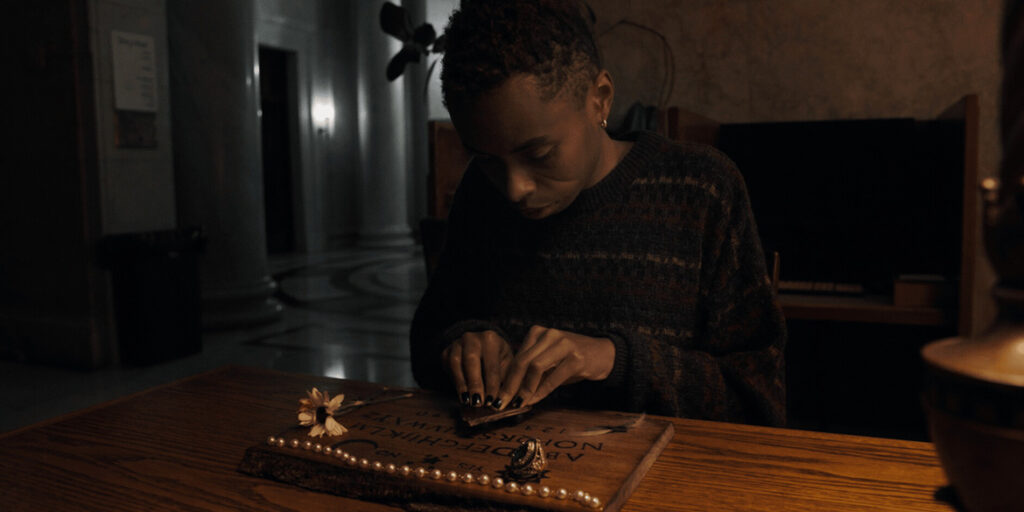What Happened to Dorothy Bell?
Ozzie Gray (Asya Meadows) struggles with mental health issues and has a realization that much of her trauma stems from an incident with her grandmother, Dorothy Bell (Arlene Arnone Bibbs). In an attempt to understand that trauma, Ozzie sets up shop in the location of her grandmother’s suicide and films anything that happens. Ozzie’s life starts to get stranger and more threatening as she gets closer and closer to finding out What Happened to Dorothy Bell(?).
Danny Villanueva Jr.’s latest venture is a chilling look at mental health and generational trauma. Fans of found footage have been conditioned to expect an overwhelming amount of shaky cam and questionable excuses for cameras to continue filming. Dorothy Bell throws away (most) of the shaky cam for more static and atmospheric shots; occasionally, it breaks out of the found footage format for a hybrid-like feeling.
Villanueva Jr. slowplays the horror and doles it out in respectable increments. The purpose of Dorothy Bell isn’t to scare the pants off the audience, rather, it wants to tell a harrowing story while making us feel for all involved. Found footage has a habit of focusing on the main character and sometimes a small group surrounding that lead, but Dorothy Bell tells the story of many people who were impacted by Dorothy Bell and how Ozzie interprets their handling of the situation. Jumpscares are replaced by atmospheric and emotional horror, which is a breath of fresh air for this subgenre.
Oh, and Asya Meadows is a powerhouse of an actor. More Asya Meadows in film, please.
Image courtesy of Panic Fest
Carry the Darkness
Carry the Darkness takes us to Anytown, USA, in the early ’90s. Satanic Panic is still fresh and alive, and D.A.R.E. was still unwittingly pushing kids towards drugs. Outcasts Travis Baldwin (Joel Meyers) and Jordan Conrad (Jaden Gant) stay in their lane of obscurity until a blonde, muscley jock pushes Travis a bit too far. When Travis soon becomes the subject of interest for a mysterious entity, death and destruction follow. Can Travis save himself and his friends before irreparable damage is caused?
Writer/director Douglas Forrester’s directorial feature debut is a slightly messy but surprisingly uplifting film about acceptance, friendship, and overcoming preconceived notions of yourself and others. It’s a supernatural horror story that’s emotionally fleshed out but feels a little forced. The once-good-kid-now-off-the-rails Travis is overwritten and feels way too on the nose. But the interactions between Travis and Jordan or Travis and Stacey Wagner (Helen Laser) do justice to the character of Travis and his actions.
The film did lose me slightly with its constant back-and-forth from character piece to police procedural. Forrester’s (and coeditor Brenna Morlock’s) pacing grinds to a halt when Carry the Darkness changes its character focus. That’s not to say there isn’t a way the detective storyline couldn’t have worked, but for this final product, it feels like they’re going a bit too hard. The detective storyline doesn’t positively affect the story’s outcome (for me) to feel justified with the amount of screen time it’s allotted.
Overall, Carry the Darkness takes some risks, some of which pay off. Forrester asks a lot from the audience, and if you don’t buy in from the jump, you’ll have difficulty buying into the finale. Even with my issues surrounding the detective storyline, Carry the Darkness was an effective and somber look at a tale that could all too easily exist within our history books.
